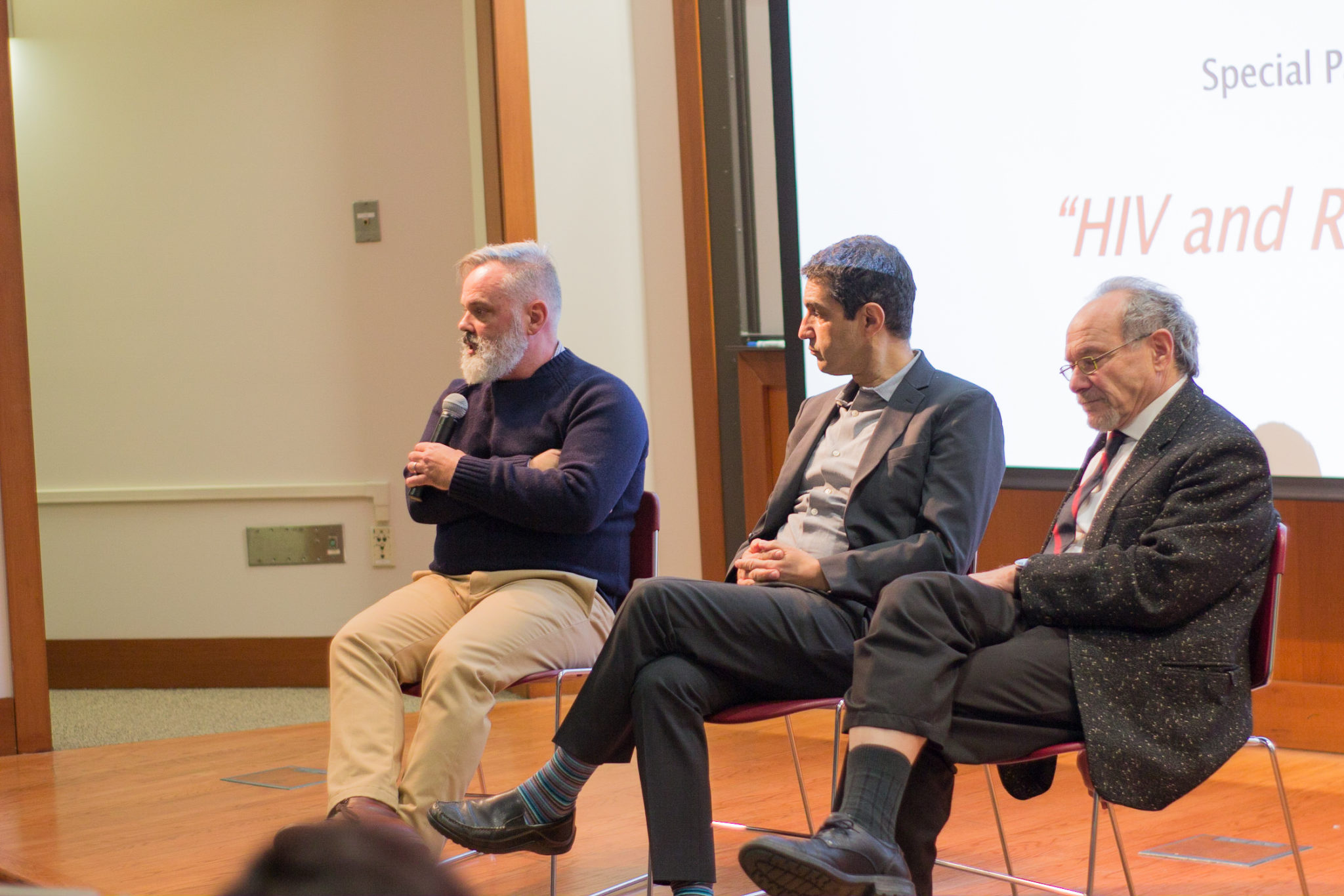
Asia Brown
On Dec. 1, 1988, the World Health Organization observed the first-ever World AIDS Day, designed to spread awareness about the AIDS pandemic and honor and remember those whose lives it had claimed.
This Friday, for the 29th World AIDS Day, the Yale Center for Interdisciplinary Research on AIDS hosted a panel discussion featuring AIDS researchers Robert Heimer and Kaveh Khoshnood and cancer researcher Mark Lazenby. While the official global theme for the day was transparency, accountability and partnerships, the session at Yale focused on the spread and treatment of HIV/AIDS in forcibly displaced populations around the world.
“We have a global refugee crisis,” Khoshnood told the News. “But within that global refugee crisis, there is a much less understood HIV/AIDS crisis.”
Although the world has made much progress, AIDS remains one of the leading causes of death in many nations. Every hour, over 200 victims worldwide contract HIV, and in the same period of time, over 100 people die from AIDS.
During Friday’s panel discussion, all of the researchers spoke about their work and larger issues associated with researching displaced people and AIDS, such as difficulty collecting data. While Lazenby does not research AIDS directly, he has significant experience with the disease, as over half of his cancer patients are also HIV positive.
Both the HIV and refugee crises are well-understood in isolation, but very little research has been done at the intersection of these areas of study, the researchers explained. They emphasized that their work includes not only refugees but also all displaced people, including those internally displaced and those petitioning for refugee status.
Heimer said that what limited data is available suggests that being forcibly displaced does not necessarily increase one’s risk of contracting HIV. In some instances, displacement may increase HIV transmission, but in others, it may reduce the risk of transmission.
“If you break up social networks, sometimes you prevent those social interactions from happening, and HIV is prevented from spreading,” said Heimer. “But sometimes, people are forced to migrate from low prevalence areas to high prevalence areas, and all of a sudden their risk increases.”
The researchers noted that displaced people have much weaker personal and governmental support systems and often do not have the same level of access to treatments, such as antiretroviral therapy. Many governments do not offer migrants the same level of medical care, and even when they do, displaced people often do not know how to access it.
Heimer, Khoshnood and Lazenby focus on different regions of the world in their research that have recently experienced large population displacements, including Lebanon, Syria and Botswana. But they added that problems related to population displacement occur throughout the world, including North America. Hurricanes Maria and Irma, for example, displaced many Puerto Ricans who have since fled to the United States and now do not have equal access to American health care. This is even a problem in New Haven, Heimer told the News.
The researchers said they hope to do more work on the topic to combat unequal access to treatment for displaced people, but Lazenby noted that ethical issues often arise. They also suggested a chain-referral approach, whereby an initial set of patients would refer others they know in order to spread the word about the availability of such treatments.
Lazenby said he hoped the talk would serve as a “call-to-action” for future researchers in the field.
“We wanted to highlight the needs of people hidden to researchers and to public policy makers,” he said. “We have to figure out how to get care to them.”
Niki Anderson | niki.anderson@yale.edu







